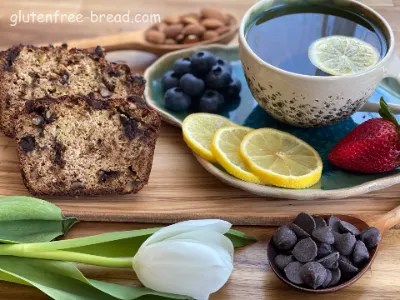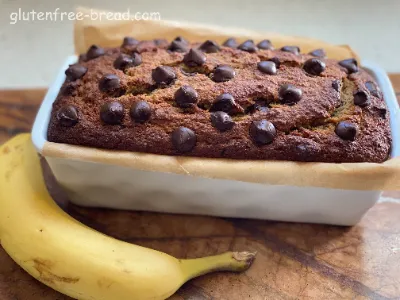Additional info
Gluten-free sweet bread is a delicious and moist bread typically made without wheat flour, catering to those who need to avoid gluten. Here’s a general description of how gluten-free sweet bread is prepared:
Flour Base: Instead of wheat flour, gluten-free sweet bread recipes often use a combination of alternative flours such as rice flour, almond flour, coconut flour, tapioca flour, or a gluten-free all-purpose flour blend. Each flour brings its own texture and flavor profile to the bread.
Sweeteners: Common sweeteners used in gluten-free sweet bread include sugar, honey, maple syrup, or agave syrup. These sweeteners not only add sweetness but also contribute to the moistness of the bread.
Liquid: Eggs, milk (or non-dairy milk for vegan versions), and sometimes yogurt or sour cream are used to provide moisture and structure to the bread.
Leavening Agents: Baking powder and/or baking soda are typically used to help the bread rise.
Fats: Oil, melted butter, or dairy-free alternatives like coconut oil are added to enhance the texture and moistness of the bread.
Flavorings: Vanilla extract, cinnamon, nutmeg, or citrus zest are often added for extra flavor.
Mixing and Baking: The ingredients are mixed together to form a smooth batter or dough. This is then poured into a greased or lined baking pan and baked in a preheated oven until golden brown and a toothpick inserted into the center comes out clean.
Variations: Gluten-free sweet bread can be made in various flavors, such as banana bread, pumpkin bread, zucchini bread, or lemon poppy seed bread, depending on the additions and flavorings used.
Serving: Once cooled, gluten-free sweet bread can be sliced and enjoyed on its own or with spreads like butter, cream cheese, or fruit preserves. It's a versatile treat for breakfast, snacks, or dessert.
Gluten-free sweet bread offers a satisfying alternative to traditional wheat-based sweet breads, providing options for those with gluten sensitivities or dietary preferences without sacrificing flavor or texture.










